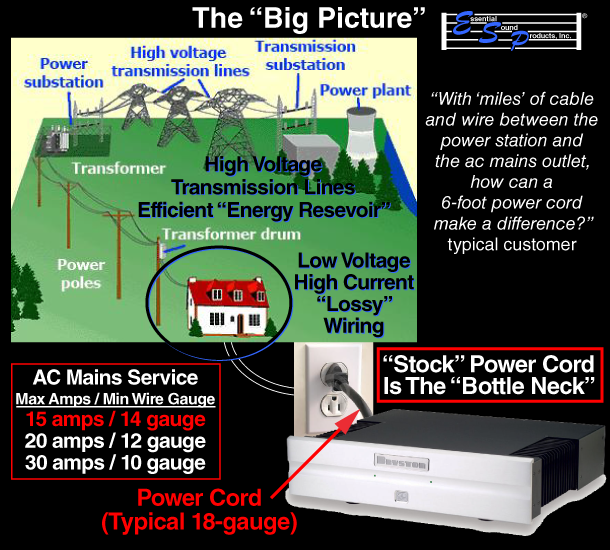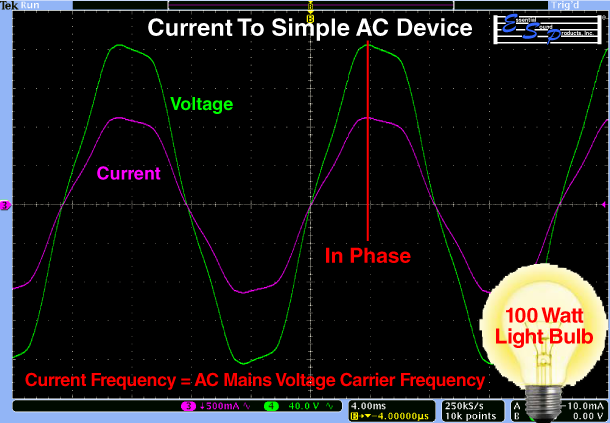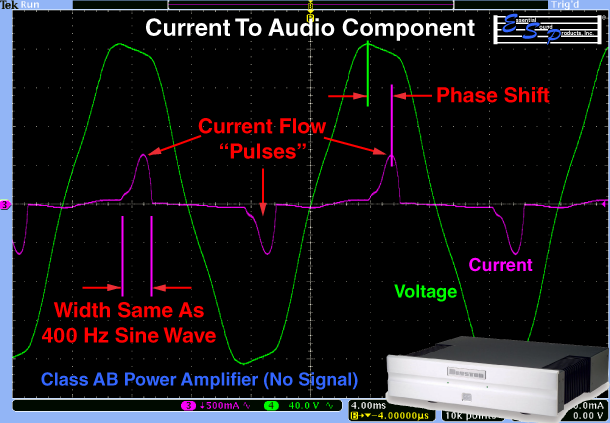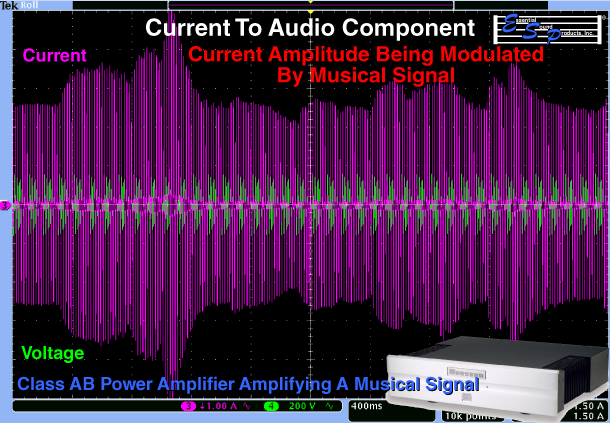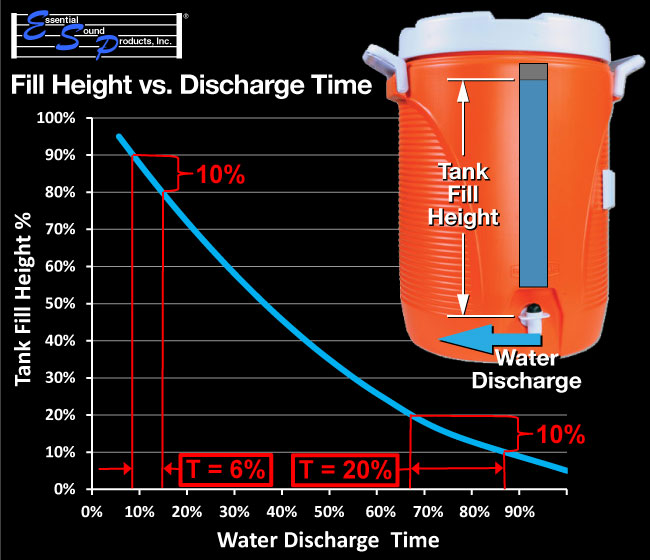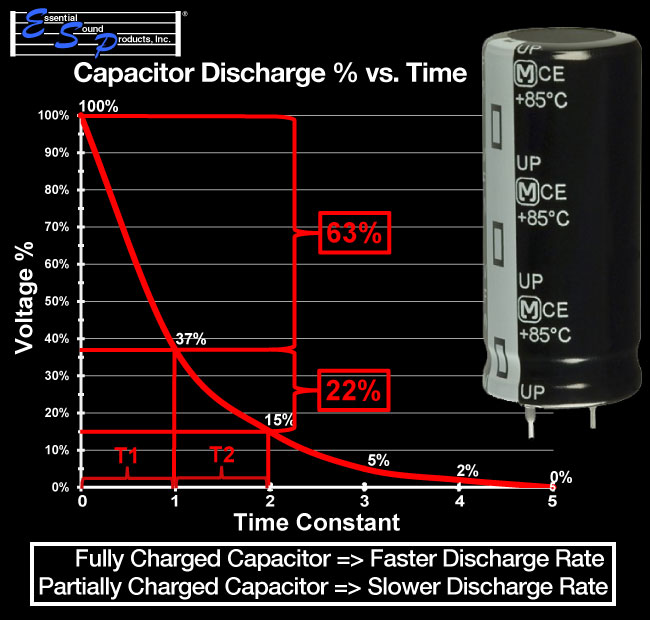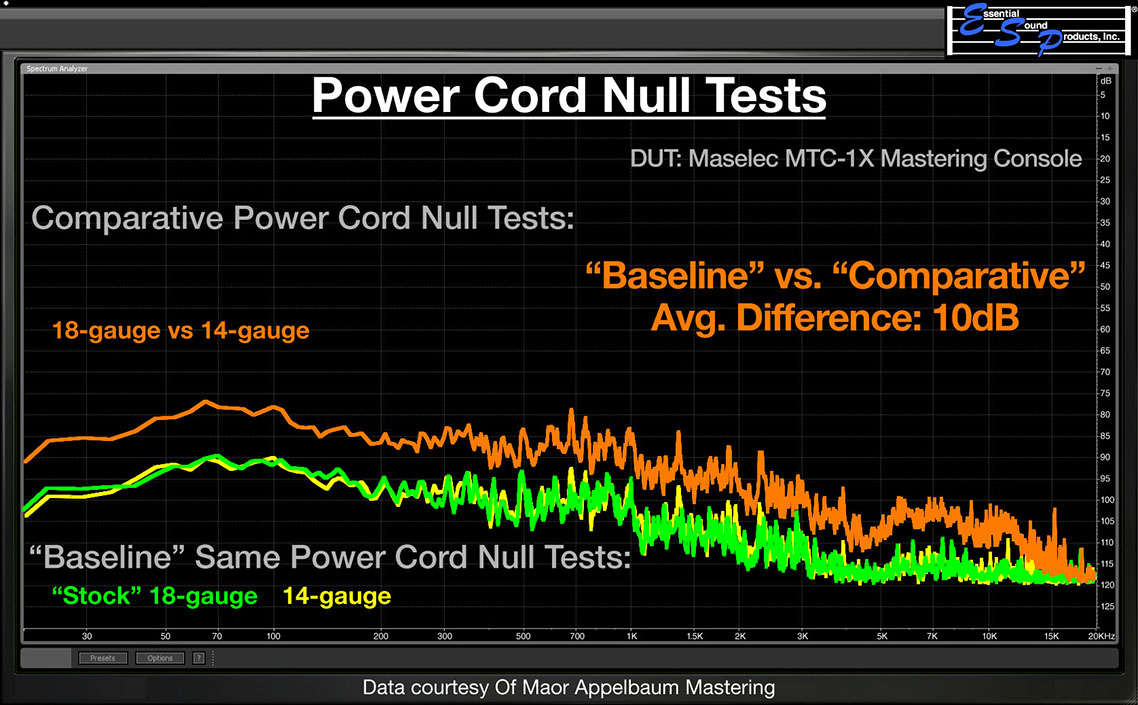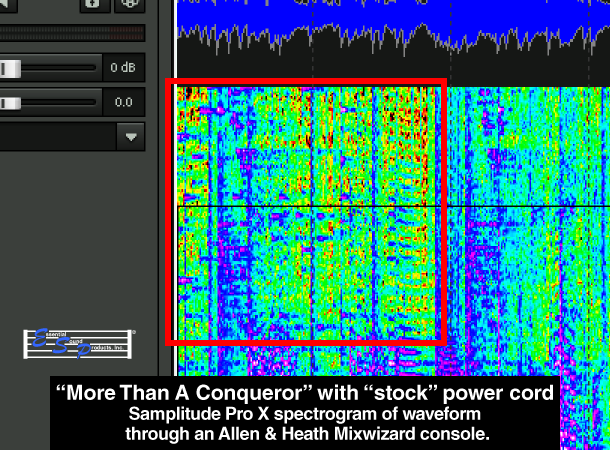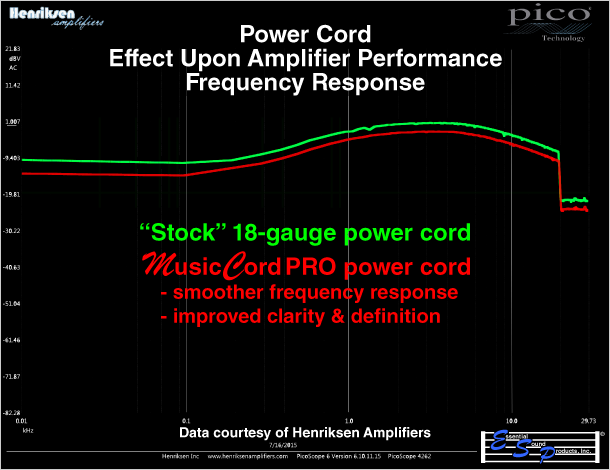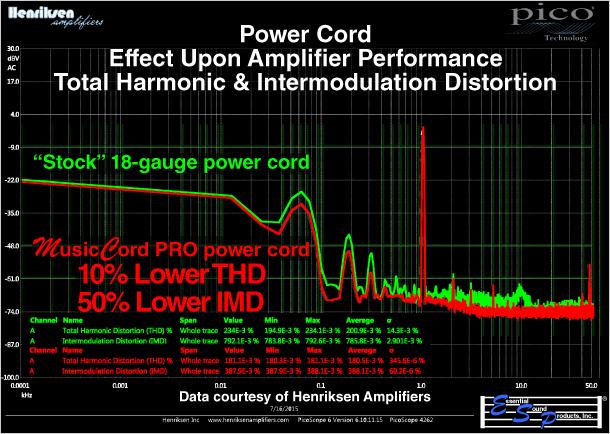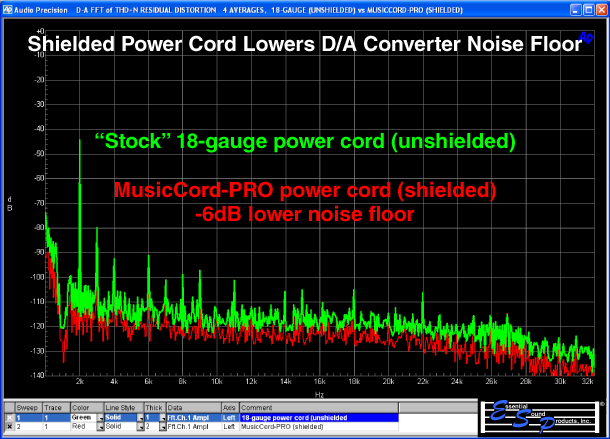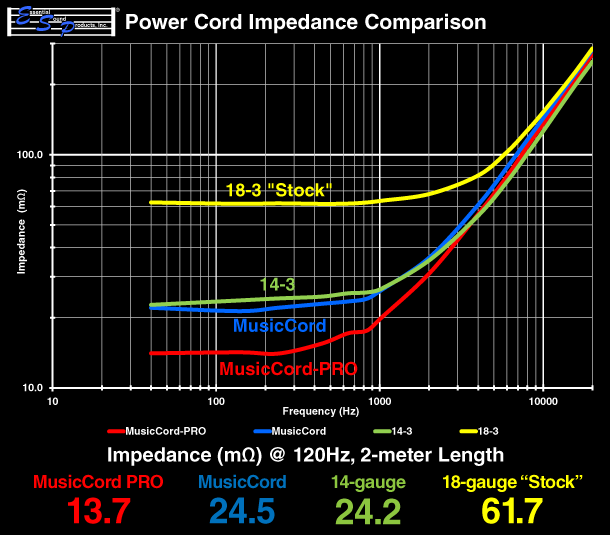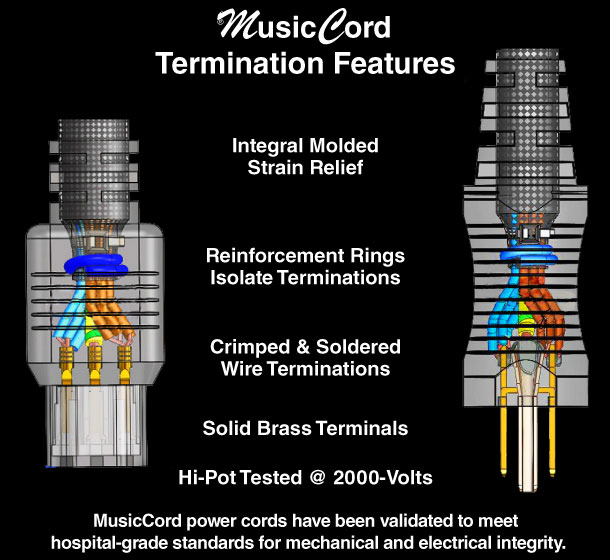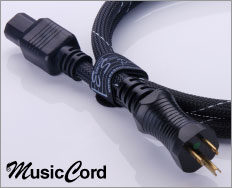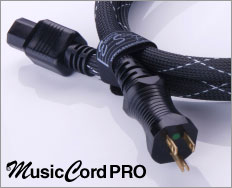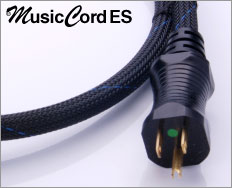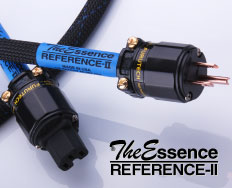Why Power Cords Matter
The Big Picture & Current Amplitude Modulation
The "Big Picture"
"With miles of cable and wire between the power station and ac mains outlet, how can a 6-foot power cord make a difference?" typical customer.
The Stock Power Cord Is The "Bottle Neck"
Electric power travels from the power station through high-voltage transmission lines. The idea behind high-voltage transmission is minimal current flow as energy is carried very efficiently via coaxial cable in a magnetic field. A single transmission line typically carries enough power for multiple homes or businesses, and can be thought of as an "energy resevoir".
Outside homes and businesses a "step-down" transformer converts the energy transmission to relatively low-voltage, requiring high-current flow largely within the conductor material. This method of conducting electricity is relatively inefficient or "lossy". For example, typically as much energy is lost in the last few hundred feet distance from the step-down transformer to your home as through the miles of coaxial cable from the power station to the step-down transformer! That's why low resistance materials like copper wire are used to minimize energy loss.
Electrical codes in North America define 12-gauge copper as the smallest wire size used for 20-AMP ac mains service; 14-gauge for 15-AMP service. So, why do most audio components come with an 18-gauge power cord? The "stock" power cord creates a relative "bottle neck" restricting current flow.
If Only It Were This Simple
Current flows continuously through a simple resistive device.
Current To Audio Components
Current Amplitude Modulation
Audio components have complex power supplies that perform several functions including rectifying "ac" to "dc", stepping down the voltage, and storing energy for use as demanded. For most of the carrier frequency cycle no current actually flows to the component, as it is powered by the stored energy in the power supply. Current flow is "switched" on/off, flowing in "pulses" every half-cycle of the ac mains carrier frequency. Power supply inductance causes a delay or negative phase shift between voltage and current. Current draw is mainly to refill the suply capacitors. If the current pulse were a continuous sine wave, its frequency would be significantly higher than the ac mains carrier frequency.
Current pulse amplitude increases with increasing demand. The oscilloscope screen image shows 4-seconds of music being amplified. What is revealing is how closely this modulation follows the musical signal being processed and how dynamic are the instantaneous current changes. Therefore, not only is flow capacity important, "response time" and "bandwidth" of the power cord matters!
High transient current flow to the component power supply
is key to optimal performance.
To the extent that current flow modulations are restricted or delayed, the power supply cannot meet demand to accurately process the musical signal. This distortion is not comprehended by existing performance metrics. However, it is clearly audible and is characterized by sound quality issues including dynamic compression, harsh midrange and treble transients, and a lack of bass extension.
Maximizing Transient Current Flow
Similar Discharge Physics Illustrate Importance Of Keeping Energy Storage Components Full
Discharge Rate Decreases As The Tank Empties
The big “cooler” is a staple at picnics, sports and other events for dispensing refreshing beverages like water, lemonade, Kool-Aid, Gatorade - you get the picture. These coolers are essentially a tank with a tap at the bottom. When the tank is full, the beverage flows forcefully from the tap. Your cup fills quickly! But as the cooler empties, the flow gets weaker and weaker until it practically dribbles from a nearly empty tank.
When the cooler tank is filled, work is performed in the process. That work is a function of the height of the liquid in the tank versus the height of the tap.
The graph shows the relative time to empty 10% of the fluid volume from top to bottom. For example, when the tank is nearly full, 10% of the liquid volume can be discharged in 6% of the total time required to empty the tank. When the tank is nearly empty, it takes 20% of the total time or more than 3 times longer to discharge the same 10% fluid volume.
The characteristic shape of the plot shows that the curve is steepest when the fill height is greatest and continuously flattens as the height is reduced. So, if you want the dischagre rate to remain at or near its maximum, keep that tank full!
Capacitors & Water Tanks Have Similar Energy Discharge vs Time Profiles
A capacitor is an energy storage device that is intended to release a charge quickly to augment steady state current flow so that dynamic peaks and transients are amplified properly. Capacitors have a discharge rate that also varies with voltage percentage. Similar to the water cooler tank, the discharge rate is greatest when the capacitor is fully charged; decreasing as the charge level is reduced. However, the difference between the discharge rates of a full versus partially full capacitor is more pronounced, characterized mathematically by an exponential function.
The graph shows that 63% of the stored energy can be discharged in the first time constant; but only 22% in the second time constant and less thereafter. So, to achieve the fastest discharge rates, you want to start the discharge from a state of the capacitor being charged to full capacity.
Considering the limited time each voltage cycle that current has to flow and refill the energy storage components like capacitors, transient current flow is key to optimizing power supply performance. This is why our power cords are designed to excel at transient current flow.
What you hear is the full dynamic contrast of the performance with maximized clarity, elimination of harsh transients and the most natural harmonics.
Proven Technology
Null Tests, Spectrograms & Audio Samples Confirm The Difference
Null Tests
Conclusive Evidence That Changing The Power Cord Does Affect Recording Quality
A Null Test is a definitive way to confirm whether a difference exists between two copies of the same audio sample. Two sample-locked copies of the same audio file are played with one copy phase inverted. If the copies are identical, they will cancel, leaving only residual random noise.
The DUT (Device Under Test) is a Maselec MTC-1X Stereo Mastering Console. No inserts are engaged, just pure transfer between the input and output of the console. Only the power cord was changed. The power cords evaluated included the 18-gauge power cord that was supplied as original equipment, a 14-gauge power cord and a MusicCord-PRO.
Multiple audio samples were produced with each power cord and null tested to establish “baselines”. Then, samples made with different power cords were null tested. The results of the baseline tests for both power cords and of the comparison are plotted together.
Each pairing of “baseline” and “comparative” null test curves reveals significant differences between the baselines and comparavive results over the audible frequency range. In other words, when comparing for example files made when the stock 18-gauge power cord was connected the DUT versus the 14-gauge power cord, the results show significant information did not null out. This is true for all pairings. The null test differences range from 10dB to 20dB! These results confirm that each power cord has a distinct and undeniable impact upon the performance of the connected component. Still skeptical? Download the files and perform the null test yourself.
Null Test Samples:
Music samples courtesy of (in order):
1. "Keeper" by Jovan Chaney
2. "Promises" by The Burgeoning
3. "This Ain’t Love" by Rehnda Rize
4. "Chris' Blues" by Music Report
5. "Grateful" by David P. Stevens
A Difference You Can See...
Samplitude Pro X Spectrograms of "stock" vs MusicCord provides visual confirmation that the difference you are hearing is real, not imagined.
MusicCord: Measurable Performance Improvements
Component Data Confirms What Your Ears Tell You
Eliminate Hum, Buzzes And Lower Noise
MusicCord's spiraled conductors and shielded cable construction rejects RFI and contains the distortion causing magnetic field that radiates from unshielded power cables.
Patented Cable Design & Road Worthy Build Quality
For Years Of Trouble-Free Service
Patented Cable Design
Multiple small-gauge line/neutral conductors combine speed and phase performance with high current capacity. Oversized ground conductor and maximum-coverage braided copper shield eliminates noise.
- Multiple Line & Neutral Conductors for transient speed, phase performance and current capacity
- Oversized Ground Conductor improves maintaining system ground
- Inner jacket spaces shield away from current carrying conductors
- Braided Copper Shield rejects RFI for lower noise
- Outer jacket for superior protection
- Woven polyester sleeving for added abrasion resistance
Road Worthy Build Quality
We combine hand craftsmanship with mass-production techinques for for optimal performance and reliability.
- Solid Brass Terminals resist bending
- Hand-Soldered Terminations for long-term reliability
- Reinforcement Rings (blue) isolate terminations from cable stresses
- Molded Strain Reliefs distribute bending stresses
- Validated To UL/CSA Safety Standards for power cords in North America
- Meets Hospital-Grade Standards for mechanical integrity
- "Hi-Pot" Tested @2000 Volts to assure insulation integrity


